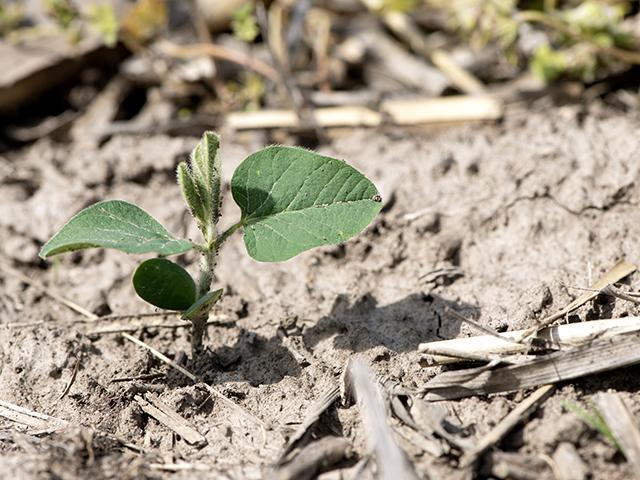Production Blog
Check Germination Percentage and Adjust Seeding Rate Before Planting Soybeans
JEFFERSON CITY, Mo. (DTN) -- Harvest issues plagued some farmers last fall as they combined overly dry soybeans. While that might seem like a problem of the past, not all of those beans are in the rearview mirror. Some have returned to the farm as this season's seed -- and could be sporting germination percentages lower than normal.
Farmers need to account for these lower percentages and adjust seeding rates accordingly to achieve the final stand they're after to maximize yield, said Shawn Conley, an agronomist and state soybean and small grain specialist at the University of Wisconsin-Madison.
"From what I've seen and heard, there are some varieties within different genetic platforms where we're seeing a reduced germination," Conley said during a phone interview with DTN this week. "I don't think it's widespread, but given the fall harvest conditions we had, I think farmers really do need to pay attention to that seed label before they start dropping seed in the ground."
The agronomist said that under normal conditions in most years, the seed industry delivers high-quality soybean seed with germination percentages that are often in the 92% to 95% range. However, this year, Conley said he's heard about delivery of seed that's labeled 80% to 85% germination.
"Today's seed-handling procedures are much better than they were 20 or 30 years ago," Conley said. "But when that soybean seed is dry, and it goes through the conditioning process of the combine and then through the elevators and augers, you can see some cracking on that seed coat that leads to a reduction in germination."
P[L1] D[0x0] M[300x250] OOP[F] ADUNIT[] T[]
According to a recent article in the Ohio State University Extension's Crop Observation and Recommendation Network (CORN) newsletter, adjusting the seeding rate at planting to account for germination percentage requires one calculation. Simply take the desired soybean plant population and divide it by the germination percentage.
So, for example, if a farmer is seeking a population of 120,000 plants per acre and the seed tag lists germination percentage at 80%, the seeding rate should be increased to 150,000 seeds per acre.
"Generally, I tell farmers if you're at that 85% threshold or below, bump your seeding rate 10%," Conley advised. "If you're normally putting out 140,000, bump it up to 155,000, or whatever that number might be in your operation."
Conley noted the addition of a fungicide seed treatment has been found to help improve germination by preventing soil-borne pathogens from entering the seed and causing damage pre-germination.
While soybeans are incredibly flexible at adjusting to a wide range of plant populations, a thin stand can potentially lead to issues by allowing troublesome weeds such as waterhemp and Palmer amaranth to establish.
"You don't want to give weeds an opportunity to find those holes because we know we don't have a lot of post-emergent control options," Conley said. "So, take a second, look at that seed tag and make these decisions. Don't take your high-yielding genetics and put them at a subpar population. Don't enter the season under the gun because you already lost yield immediately from the moment that seed went in the ground."
The Ohio State CORN newsletter article can be found here: https://agcrops.osu.edu/…
More from DTN: https://www.dtnpf.com/…
Jason Jenkins can be reached at jason.jenkins@dtn.com
Follow him on social platform X @JasonJenkinsDTN
(c) Copyright 2025 DTN, LLC. All rights reserved.






